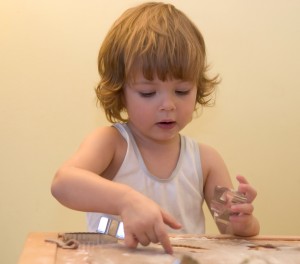 Procedures are the step by step descriptions of how to do something. They are one of the language tasks children learn as they move from using single sentences to joining sentences together to form larger blocks of language called “texts”. Being able to retell procedures is important in developing the skills needed later in science type subjects and in understanding and writing non fiction.
Procedures are the step by step descriptions of how to do something. They are one of the language tasks children learn as they move from using single sentences to joining sentences together to form larger blocks of language called “texts”. Being able to retell procedures is important in developing the skills needed later in science type subjects and in understanding and writing non fiction.
Procedures help kids learn:
- sequencing skills
- how to link sentences together
- time concepts such as first, next, last
Procedures can be fun for kids to learn because they can be based around real life, hands on activities. Technology such as digital cameras and printers mean it is now quicker, easier and cheaper for parents to make their own personalised resources to help their child learn these skills.
Procedures for preschool kids can include:
- daily activities such as getting dressed, brushing your teeth, having a bath
- simple food preparation such as making a sandwich, milk shake, juicing an orange, making a salad
- simple craft activities such as drawing, painting, collage
- simple construction activities such as building things from blocks or Lego
- outings that have a clear sequence such as going to the shops or the doctors
- travelling to a familiar place such as the park or preschool
- special events such as decorating the Christmas tree, making a birthday card or cake, wrapping a present
As you do the activity with your child:
- Start with a simple activity with three steps and make the activities longer and more complex as your child develops.
- Talk about what you are going to do and what the steps are.
- Do the activity together talking about each step as you do it and what will come next.
- Use time concept words such as first, next, last and joining words “and then..”. “first we put butter and jam on, then next we cut the sandwich and then we eat it last”
- At the end list each step that you did then ask your child to tell you the steps
- If you have made some visuals (see below) help your child to use these to sequence and describe what you have done
- Talk about what you have done with someone else for extra practice “Tell Dad how you helped me make the sandwiches.”
Use visuals to help your child learn to sequence the steps and describe them.
- Take some photos of your child as they do an activity, print and cut out the photos and use these for your child to put in order and retell what they have done.
- Try making short movie clips, playing them back, stopping at each step and talking about what is happening.
- Make your photos into books and write the words for each step to go with each picture
- Make your photos into a power point or slide show to look at on your computer or ipad and perhaps record a voice over with your child describing what is happening
Other ways to help your child develop procedural language:
- Make a habit of telling your child what you are going to do and what the steps are before you do it “I am going to make breakfast, first I will cook the toast, then put butter and jam, and then we can eat it”
- Ask your child to tell you how they did things, such as if they have made something at preschool. “You made a bus out of a box, tell me all the things you did to make it”
- Encourage your child to describe to others the things that they have done. “Tell Grandma how we made the birthday cake. Tell Dad all the things you did at preschool today”.
- Take photos of special events such as outings and make these into a series of pictures or a book for your child to look at and talk about. Encourage them to share these with others.
- At the end of the day talk though the things you did and how you did them
- Encourage your child to tell others how to do things that they know how to do. “Tell your brother what he has to do to make a Lego house like the one you made. Tell your sister what she needs to do to brush her teeth all by herself”.
- Look at books together that show procedures such as kids cook books, craft books and other non-fiction books.
- Involve your child in activities where you have to work out how to do something such as assembling a bookshelf or fixing the car. Let them see you look up the procedure using the instructions and following them step by step.
We hope you have fun learning procedures together. For more language activities and ideas visit the Talking Matters website talkingmatters.com.au and check out the “downloads” section for downloadable ideas and activities.
Related Blog Posts
If you liked this post you may also like:
12 ways to pretend at 3 years
Self esteem
Books for literacy
Gardening - Supporting Your Child's Development



